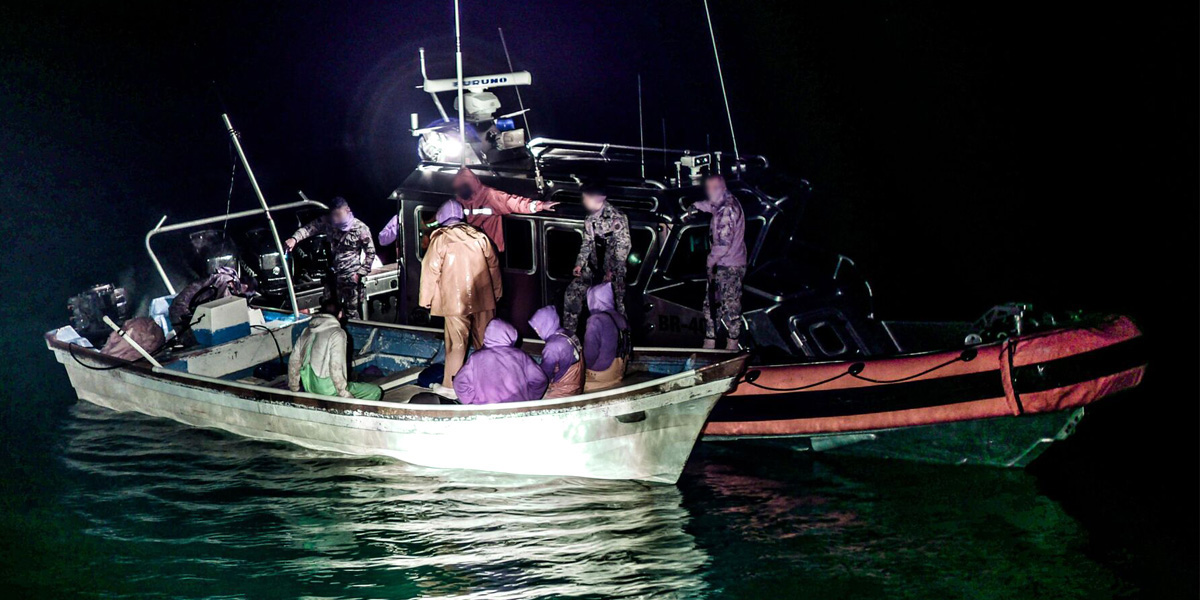

Six fishing boats engaged in illegal activities were spotted by Sea Shepherd Conservation Society in Mexico’s Sea of Cortez, ending in their arrest by the Mexican Navy.
On Dec. 12, Sea Shepherd’s M/V Farley Mowat located poachers on radar before confirming their identities with binoculars. The six fishing boats were working together, using forbidden nets to catch the endangered totoaba bass inside a marine reserve in Mexico’s Gulf of California.
“Sea Shepherd’s partnership with the Mexican Navy is achieving results,” Sea Shepherd founder and CEO Captain Paul Watson said. “Every poaching vessel intercepted and arrested is one step closer to preventing the extinction of the vaquita.”
The totoaba is a rare fish native to the Gulf which can measure up to 6 feet in length and weigh as much as 220 lbs. Fishing for totoaba has been banned by the Mexican government since 1975, but it continues to be hunted by poachers solely for its swim bladder, which is sold on the black market in China for more than $20,000 per kilo.
When spotted by the Farley Mowat crew, the poachers began retrieving their nets as fast as they could, while others fled the scene immediately. The Farley Mowat tracked these boats, even while some of them tried to slow it down by maneuvering around the Sea Shepherd vessel.

Throughout the process, the Farley Mowat remained steadfast, following the poachers for about an hour until the Navy arrived. The poachers attempted to evade capture, giving up only when the Navy came at them with rifles drawn. No shots were fired.
“Without Sea Shepherd, the poachers would continue to destroy their own environment,” said Farley Mowat Captain Sebastien Fau.
The Farley Mowat and the M/V Sam Simon are currently in the Gulf of California as part of Operation Milagro III to stop the imminent extinction of the endangered vaquita porpoise. Both ships are protecting the vaquita refuge and patrolling for poachers among other duties.
Known as the world’s smallest and rarest marine mammal, the vaquita is facing a real threat of extinction. The most recent statistics show the population has dwindled to an estimated less than 60 individuals.
https://twitter.com/NRDC/status/740594016388063232
The biggest threat to the vaquita survival are the poachers using illegal gill nets to catch the totoaba. Vaquita often become entangled in the nets and are unable to reach the surface of the water to breathe, causing them to drown.
The arrested poachers were using shrimp nets—forbidden in the vaquita reserve since 2015—and totoaba nets, which are banned in Mexico.
While investigating the nets left by the fleeing fishermen, Farley Mowat found such live animals as sharks, rays, crabs and other fish trapped in the mesh. All were released.
“Our collaboration with the Mexican authorities in patrolling the area and retrieving nets is highly important to the safety of the vaquita refuge and marine reserve,” campaign leader and director of Ship Operations Captain Oona Layolle said. “The more boats Sea Shepherd has in the area, the better we can guard against poaching. The vaquita needs all of our efforts now.”

 233k
233k  41k
41k  Subscribe
Subscribe 